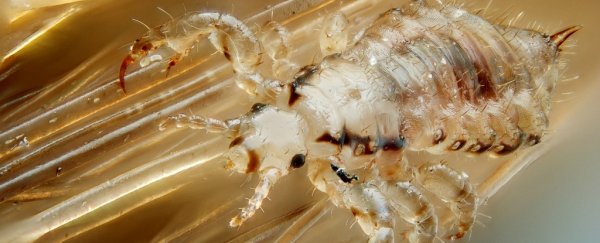Scientists have analysed the effectiveness of over-the-counter head lice treatment over the past 30 years, and let's just say it's not looking good.
In fact, two of the most used type of over-the-counter medications for head lice, permethrin and synergized pyrethrins, have had a 75 percent drop in effectiveness since 1985.
"Recent clinical studies from across the United States have found that permethrin effectiveness has declined to 25 percent, even with nit combing, a level described as being no better than placebo," the researchers, from John Hopkins Medicine in Maryland, conclude.
Check out this table, showing the single treatment effectiveness across the US, and just watch those percentages drop:
The treatment formula has barely changed over the years, so how the hell does this happen?
Well, bacteria aren't the only things that can gain resistance to particular forms of chemicals through subtle genetic changes over time. Head lice can become resistant to toxic chemicals too, like – you know – head lice treatments.
In this case, genetic testing has shown that gene changes called knockdown resistance mutations can reduce sensitivity in the nervous system, and help keep the lice alive. Just in case you were wondering, the frequency of these mutations in US head lice is currently at 99.6 percent.
"Our findings indicate that over-the-counter treatments for head louse infestations are no longer likely to be effective," said one of the researchers, Terri Meinking.
Now, we've all heard of those home remedies for nits, such as essential oils, mayonnaise, or petroleum jelly, but don't go slathering them on your head just yet.
The report also advised that these home remedies are ineffective, and with no studies evaluating their safety, it's probably best to steer clear.
"These therapies may transiently suppress louse metabolic activity, giving the false impression of death, only to have them awaken shortly thereafter - the so-called 'resurrection effect'," the researchers say.
Thankfully, there are still some head lice treatments that do work, and won't require you to shave your whole head (or cover it in mayonnaise).
The researchers singled out malathion, benzyl alcohol, spinosad, and topical ivermectin, as the active ingredients to look out for. However, these are mostly prescription products in the US, so you'll have to go to a doctor to get your hands on one.
Although these are all likely going to be lifesavers if you do find yourself with head lice, the lead author of the study, Ellen Koch, warns that even these products aren't safe from overuse.
"The lesson we should learn is that those products that do remain effective, which are available by prescription, should be used judiciously so that they do not suffer the fate that has befallen the pyrethroids," she says.
Basically, make sure you get rid of all the head lice - nit combing and all - otherwise we might be looking at a superbug head lice situation that nobody wants.
The research has been published in Pediatric Dermatology.

